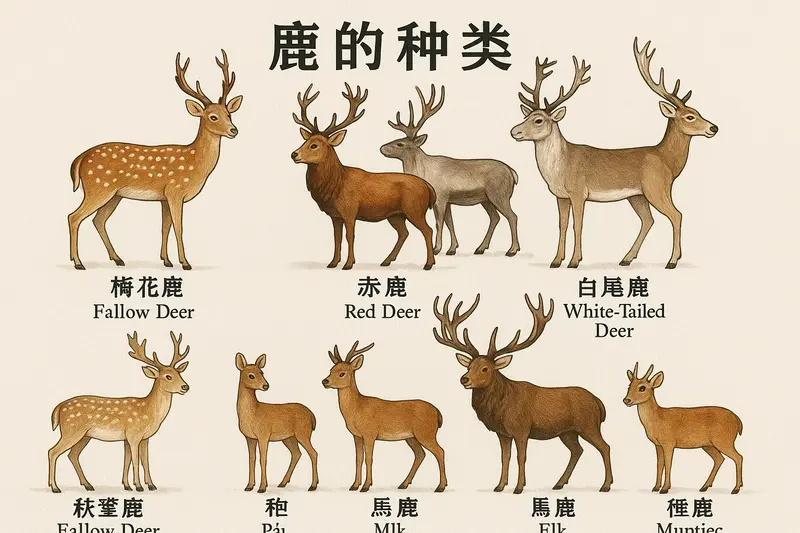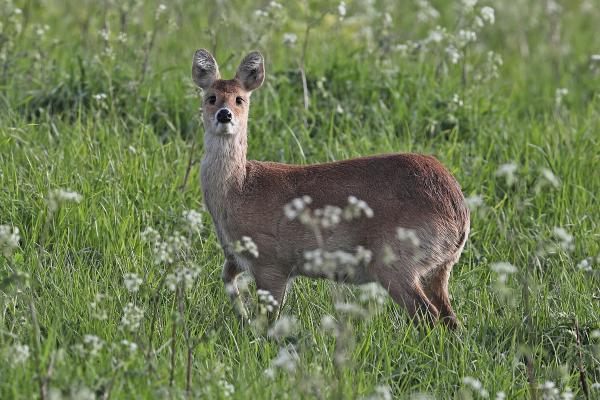Deer, scientifically known as Cervidae, are a diverse family of hoofed mammals that includes deer, elk, moose, reindeer, and water deer. They are best known for the antlers present in males, which are bony structures used for mating displays and fights.
This article explores the classification, subfamilies, defining features, geographic distribution, habitats, and representative species of deer.

All deer belong to the following taxonomic hierarchy:
Kingdom: Animalia
Phylum: Chordata
Class: Mammalia
Order: Artiodactyla (even-toed ungulates)
Family: Cervidae
Cervidae includes three main subfamilies:
Cervinae – Old World deer
Capreolinae – New World deer
Hydropotinae – Water deer
Members of Cervinae are primarily found in Eurasia, with some introduced populations elsewhere. This subfamily is notable for its wide range of body sizes, habitats, and the pronounced sexual dimorphism.
Notable features:
Males have well-developed, branching antlers;
Some Asian species, such as muntjacs, possess both small antlers and large canine teeth;
Adapted to diverse environments from Himalayan mountains to Southeast Asian rainforests.
Key examples:
Cervus elaphus – Red deer
Cervus nippon – Sika deer
Dama dama – Fallow deer
Elaphodus cephalophus – Tufted deer

Also called the telemetacarpal deer, Capreolinae includes species mainly from the Americas, but also some Eurasian species like the reindeer.
Key characteristics:
Antlers are typically straighter and less branched than in Cervinae;
Less marked sexual dimorphism;
Range from Arctic tundra to South American tropical forests;
Highly adaptable to various climates.
Representative species:
Odocoileus virginianus – White-tailed deer
Odocoileus hemionus – Mule deer
Rangifer tarandus – Reindeer (Caribou)
Alces alces – Moose
This small and unique subfamily includes only one extant species: the Chinese water deer (Hydropotes inermis).
Notable traits:
Found in China and Korea, typically in wetlands and riverbanks;
No antlers in either sex, setting it apart from other deer;
Males possess elongated upper canines (tusks) used in fights;
Small in size, secretive in behavior.
Deer are present on every continent except Antarctica, Australia, and oceanic islands. Their wide distribution is due to their ecological adaptability:
Tundra & Arctic: Thick fur, large hooves for snow and bogs;
Boreal & Temperate Forests: Flexible diets, winter browsing;
Tropical Forests: Small body size, cryptic coat coloration;
Grasslands & Savannas: Long legs for running, grazing habits;
Mountainous Terrain: Specialized hooves and high-altitude foraging;
Wetlands & Aquatic Zones: Swimming ability, like in water deer.
animal tags: deer
We created this article in conjunction with AI technology, then made sure it was fact-checked and edited by a Animals Top editor.